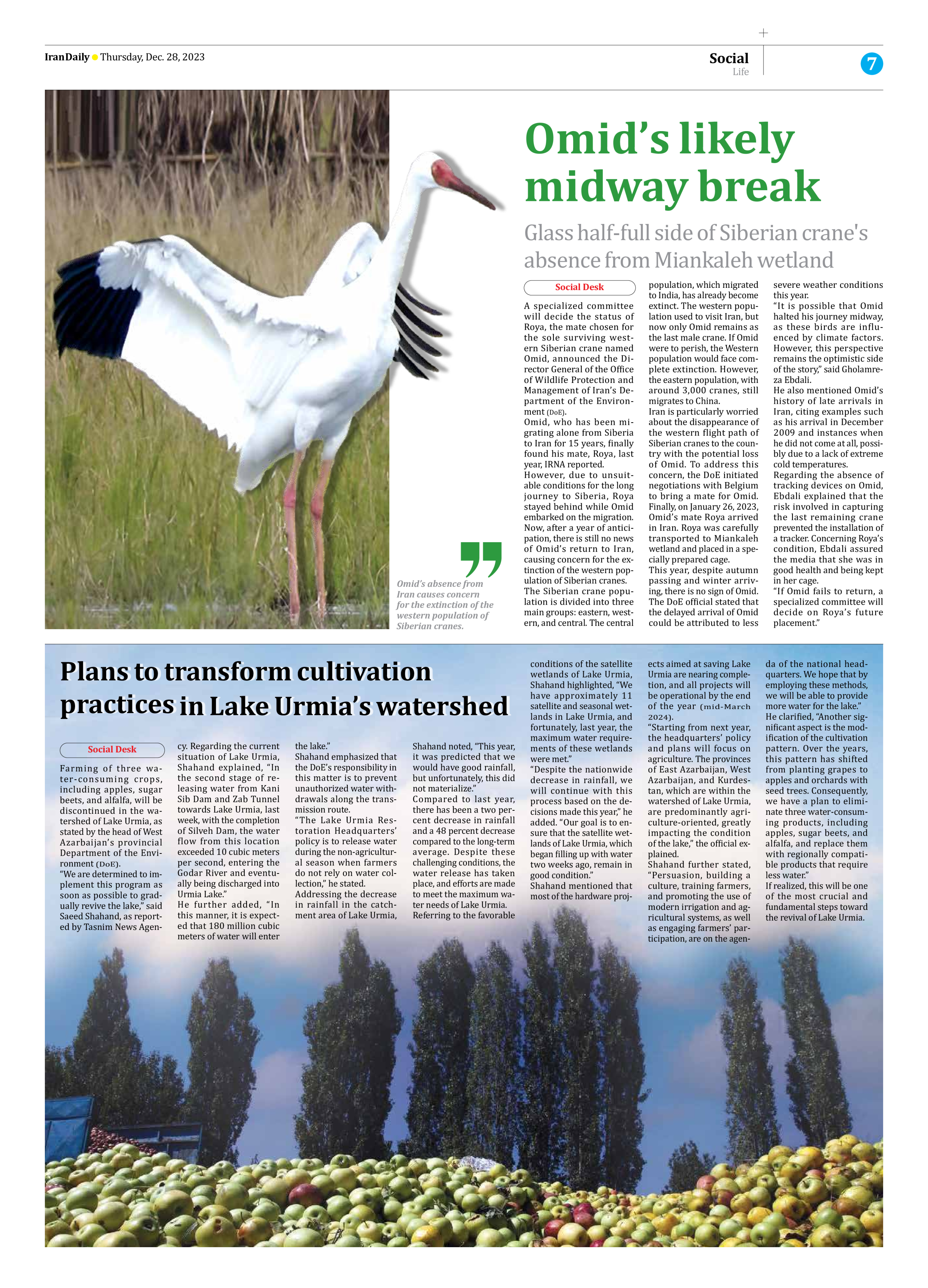
Plans to transform cultivation practices in Lake Urmia’s watershed
Farming of three water-consuming crops, including apples, sugar beets, and alfalfa, will be discontinued in the watershed of Lake Urmia, as stated by the head of West Azarbaijan’s provincial Department of the Environment (DoE).
“We are determined to implement this program as soon as possible to gradually revive the lake,” said Saeed Shahand, as reported by Tasnim News Agency. Regarding the current situation of Lake Urmia, Shahand explained, “In the second stage of releasing water from Kani Sib Dam and Zab Tunnel towards Lake Urmia, last week, with the completion of Silveh Dam, the water flow from this location exceeded 10 cubic meters per second, entering the Godar River and eventually being discharged into Urmia Lake.”
He further added, “In this manner, it is expected that 180 million cubic meters of water will enter
the lake.”
Shahand emphasized that the DoE’s responsibility in this matter is to prevent unauthorized water withdrawals along the transmission route.
“The Lake Urmia Restoration Headquarters’ policy is to release water during the non-agricultural season when farmers do not rely on water collection,” he stated.
Addressing the decrease in rainfall in the catchment area of Lake Urmia, Shahand noted, “This year, it was predicted that we would have good rainfall, but unfortunately, this did not materialize.”
Compared to last year, there has been a two percent decrease in rainfall and a 48 percent decrease compared to the long-term average. Despite these challenging conditions, the water release has taken place, and efforts are made to meet the maximum water needs of Lake Urmia.
Referring to the favorable conditions of the satellite wetlands of Lake Urmia, Shahand highlighted, “We have approximately 11 satellite and seasonal wetlands in Lake Urmia, and fortunately, last year, the maximum water requirements of these wetlands were met.”
“Despite the nationwide decrease in rainfall, we will continue with this process based on the decisions made this year,” he added. “Our goal is to ensure that the satellite wetlands of Lake Urmia, which began filling up with water two weeks ago, remain in good condition.”
Shahand mentioned that most of the hardware projects aimed at saving Lake Urmia are nearing completion, and all projects will be operational by the end of the year (mid-March 2024).
“Starting from next year, the headquarters’ policy and plans will focus on agriculture. The provinces of East Azarbaijan, West Azarbaijan, and Kurdestan, which are within the watershed of Lake Urmia, are predominantly agriculture-oriented, greatly impacting the condition of the lake,” the official explained.
Shahand further stated, “Persuasion, building a culture, training farmers, and promoting the use of modern irrigation and agricultural systems, as well as engaging farmers’ participation, are on the agenda of the national headquarters. We hope that by employing these methods, we will be able to provide more water for the lake.”
He clarified, “Another significant aspect is the modification of the cultivation pattern. Over the years, this pattern has shifted from planting grapes to apples and orchards with seed trees. Consequently, we have a plan to eliminate three water-consuming products, including apples, sugar beets, and alfalfa, and replace them with regionally compatible products that require less water.”
If realized, this will be one of the most crucial and fundamental steps toward the revival of Lake Urmia.







